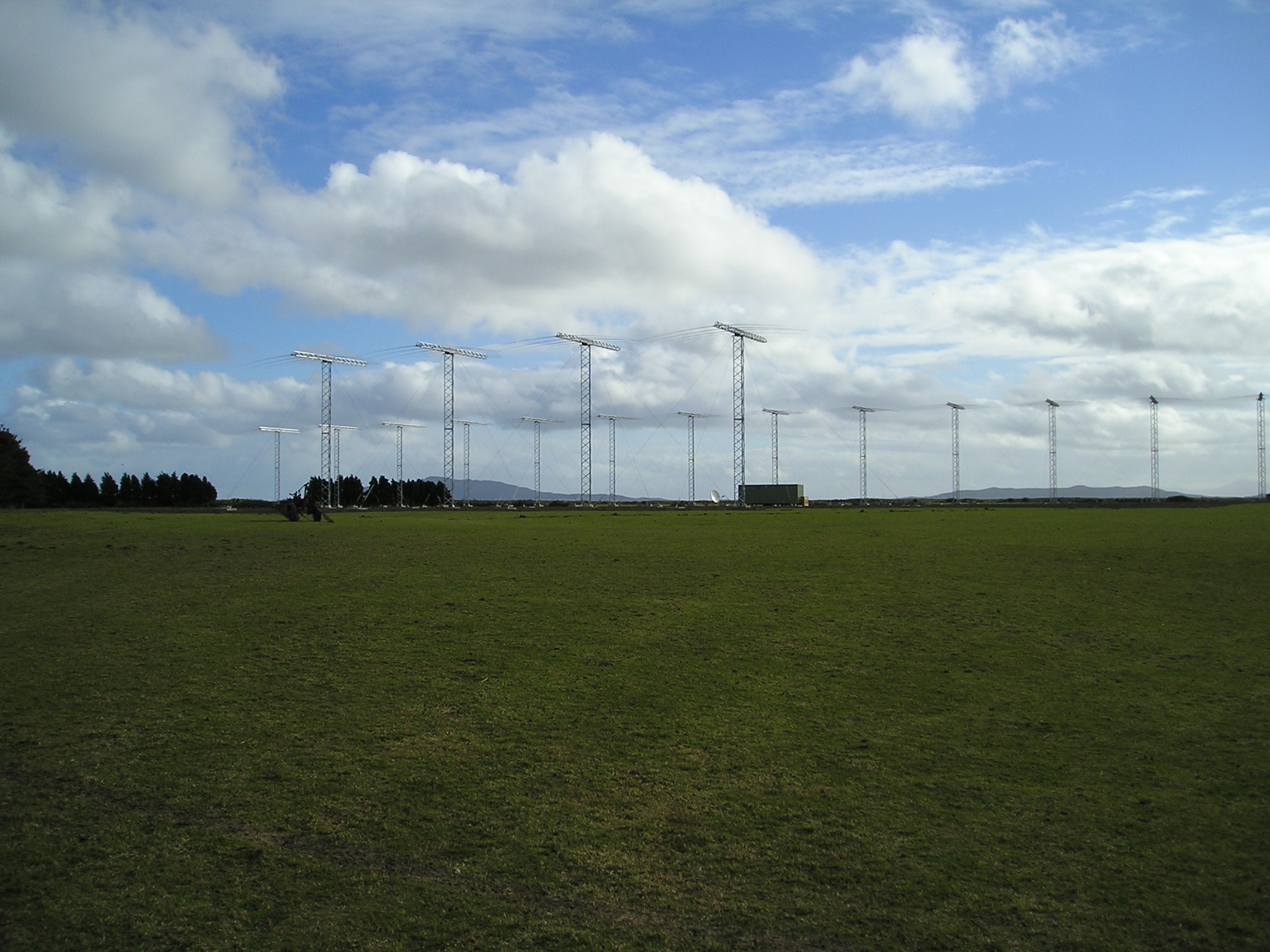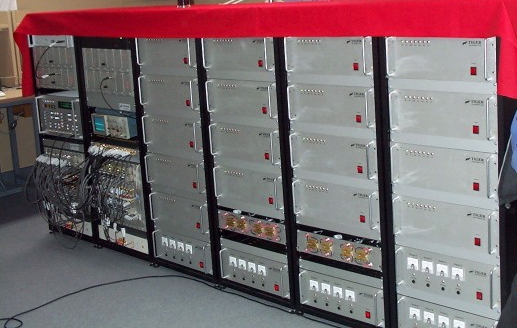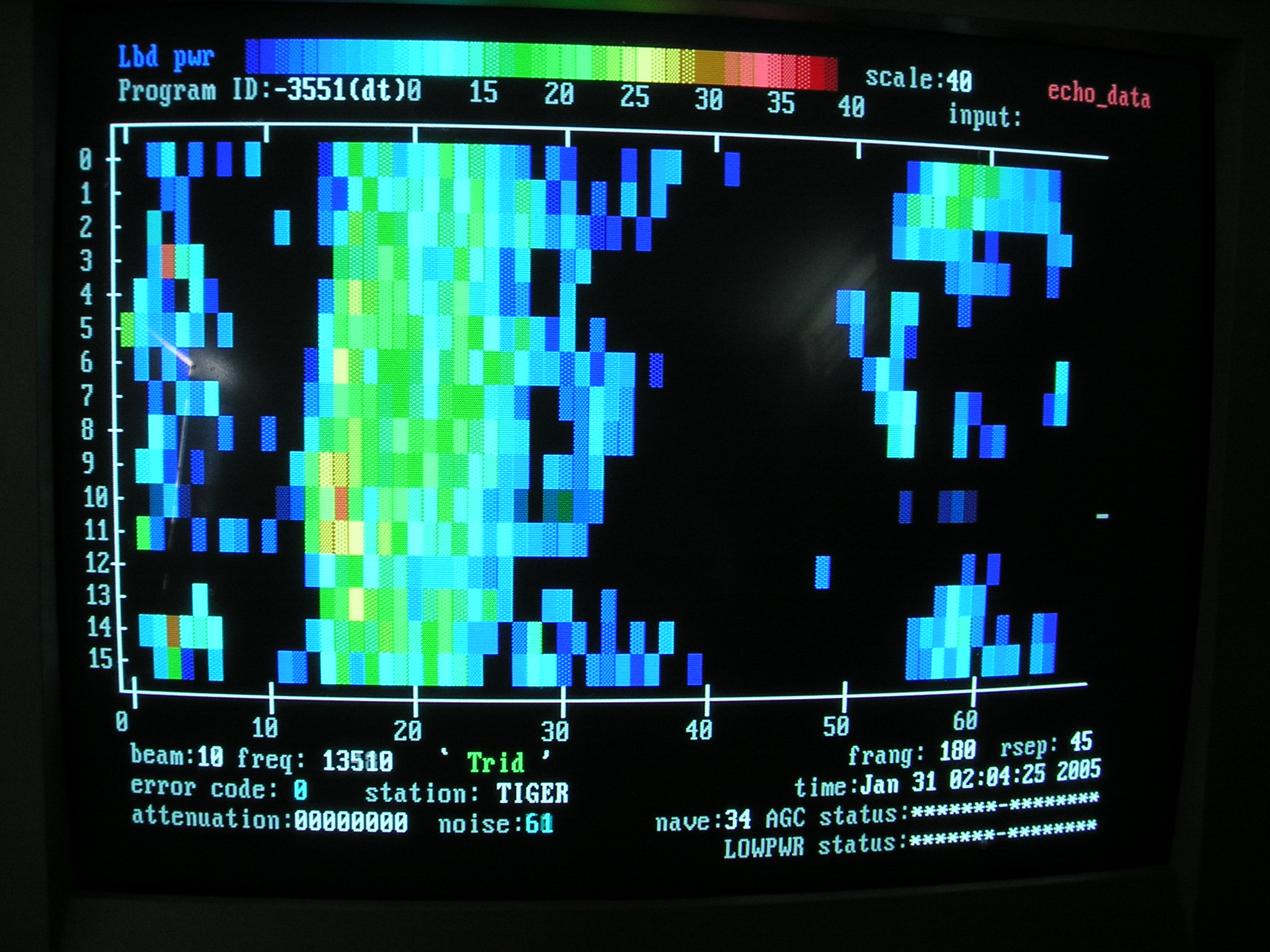TIGER - Unwin Radar
In developing the Tasman International Geopspace Environment Radar (TIGER) the aim has been to extend the SuperDARN network in the Southern Hemisphere, but with the important difference of extending coverage to the sub-auroral region. This provides opportunity to observe new phenomena and to improve the coverage of auroral phenomena during magnetic storms when the aurora expands equator-ward of the footprints of the other radars in the SuperDARN network.
The Unwin Radar footprint covers the lower latitude portion of the auroral oval and the ionospheric trough. The New Zealand component, located on the South Island near the city of Invercargill, began operation in December 2004.
Visit the Development of the Unwin Radar page for more photos and information.
 |
 |
Due to the TIGER - Unwin radar's excellent geophysical location, gives unique opportunities to study Geospace processes such as the Aurora Australis and related phenomena occurring in the ionosphere (100 to 300km) above the earth.
The TIGER - Unwin radar is based on the existing third generation HF radar constructed by the University of Leicester, including improvements to the transmitters, power supplies and micro-controllers. This radar is a Stereo system, thereby transmitting two different set of frequencies simultaneously at one time. Where as it's counterpart TIGER - Bruny is a Mono system and transmits one set of frequencies at one time. Unwin is only one of three stereo radars to be operated in the SuperDARN community and the only HF Stereo radar to be operating in the southern hemisphere.
The Stereo radar comprises a complete second channel extending back from transmitters to the receivers. Thus the input/output from each transmitter and the four interferometer phase matching units are split by twenty 2:1 splitters. The second channel is then mirror of the first, having its own phasing matrix, transmit-receive switch, PTS synthesizer and two channel receiver.
The basic specifications of the TIGER radar are listed in the table below;
Frequency Band: 8 - 20MHz Antenna Arrays: Tx/Rx Array: 16 Horizontally polarised log-periodic
2nd Rx Array: 4 Horizontally polarised log-periodicBeam Widths: Horizontal: 4° at 10MHz, 3° at 14MHz, 2° at 18MHz
Vertical: 50°Lobe Levels: <- 14dB for both back and side lobes Transmitters: 16 x 600W (one per antenna in Tx/Rx array) Total Peak Power: 9.6kW Mean Power: 200W Radiated Power: 12.5W in main beam direction Tx Signals: Pulse pattern duration: ~ 100ms
Pules width: 300us
Bandwidth: 10kHz at -20dB
Duty Cycle: 2.1% Carrier frequency
All SuperDARN radars use common basic operating software which can readily be adapted by each radar group for special operations or new modes which may later be adopted by the entire radar network. The radar operates as a fixed-frequency sounder, choosing a suitable frequency in the 8 - 20MHz band. The frequency selected is that providing the greatest amount of ionospheric scatter across the radar footprint and which, due to ionospheric motions, has a significantly larger Doppler shift than sea or ground backscatter. The radars will switch to a different frequency if there is more ionospheric scatter there and it can happen once every few hours. Frequent changes in operating frequency would make it difficult to separate temporal variations of ionospheric and magneto-spheric phenomena from propagation changes caused in operating frequency.
The transmitting antenna consists of 16 log-periodic, 10 element, horizontally polarised antennas supported by 15m towers. Each antenna is fed by its own 600W power amplifier and a phasing network is used to scan the main beam of the array over 52° of azimuth in 16 steps. The antenna horizontal beam-width varies with frequency and pointing direction but is ~3°. A much broader vertical beam-width (~50°) facilitates the detection of echoes with ranges as small as 180km and as great as 3330km. Both TIGER radars pulse enable the same antenna array to be used for transmission and reception. An auxiliary receiving array of 4 antennas forms an interferometer to measure the elevation angle of arrival. In the most common modes of operation TIGER completes a full azimuth scan in 1 or 2 minutes.
TIGER typically operates near 14MHz during day-time and 12MHz at night but this changes with the level of solar activity. It is also capable of swept-frequency operation meaning that when irregularities are widespread throughout the ionosphere, the radar detects ionospheric and sea scatter over much of its range window and over a broad band of frequencies as can be seen below.
 |
 |
